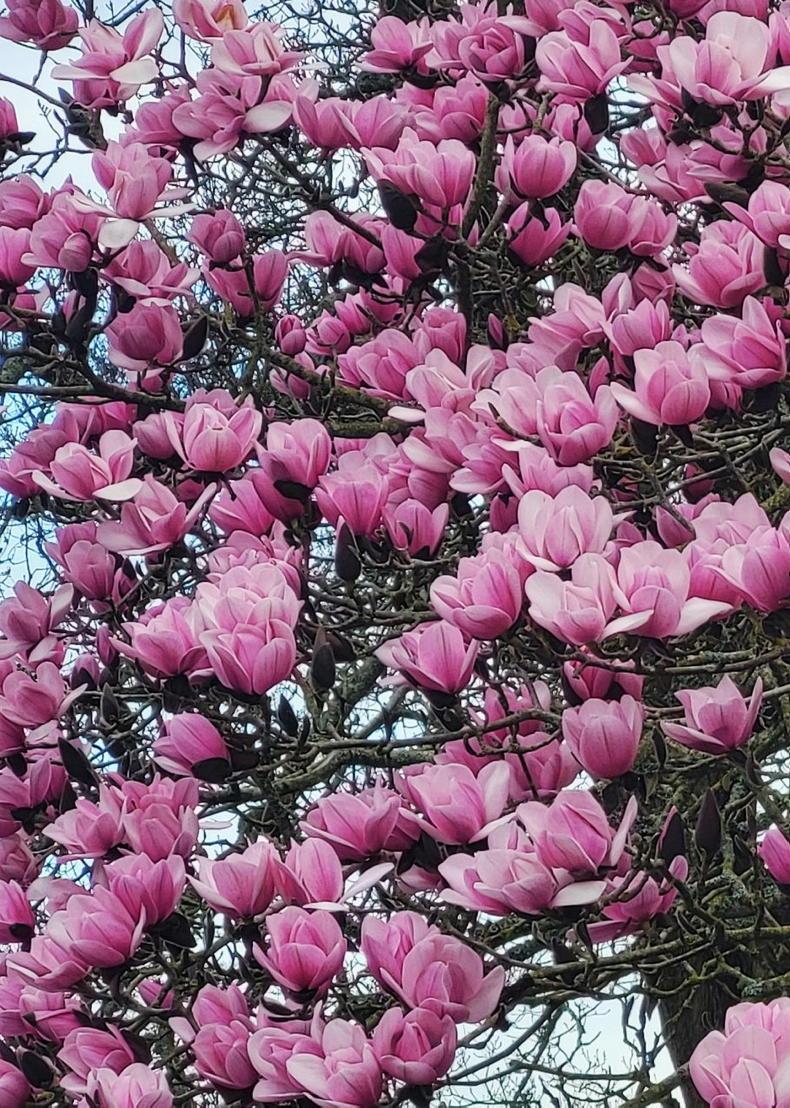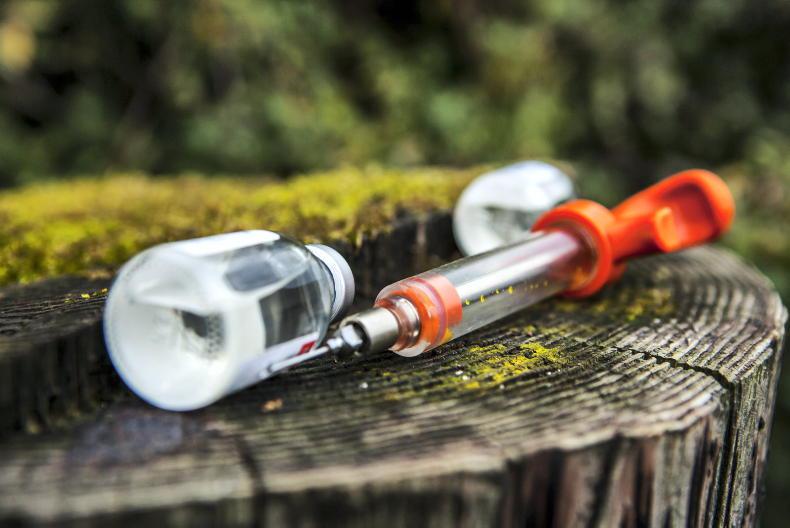Get outside into the fresh air for a walk! This is the advice given time and again in mental health articles. It’s solid advice but considering the percentage of our readers that spend the majority of their time in the great outdoors, I often wonder how useful it is to them. With our Groundcare focus this week, I looked for some statistics.
It is generally accepted that one of the only benefits of COVID-19 was to encourage people to spend more time outside. Central Statistics Office (CSO) data on “our lives outdoors” found that almost 65% of participants aged 18 to 34 and more than half of those 35 to 69 spent more time outdoors since the pandemic. Almost half of the respondents with access to a garden reported spending time there daily in the six months leading to the survey (summer 2022). Personally, I am much more inclined to walk the woods than dig the garden. I love flowers, the smell, the sight and the nice feelings one gets on receiving them. However, my fingers are unfortunately in no way green. I have a healthy respect for the fact that gardening takes time that I won’t/can’t dedicate to it. So I get by with the odd bunch of cut flowers and some fiercely resilient houseplants. Between my love of flowers – grown by other people – and reading about Mary Keenan’s visit to Mount Congreve, the children and I went along to see this garden redevelopment ourselves.

Mount Congreve Gardens. \ Colin Shanahan
Our walk through the scent and sight of the pink magnolias resulted in the stress gauge on my smartwatch showing some (low-stress) blue bars among the reds. This is unfortunately unusual for me as it is with many, particularly farmers heavily stressed at this time of year. But getting out in nature must be combined with other elements of self-care, such as exercise and diet, to be of real benefit. A 2022 Department of Health report shows Ireland has the highest life expectancy in the EU at 82 years. Across the Atlantic, however, life expectancy has improved much less than in comparable countries. The reason for this is attributed, by researchers at the University of Minnesota, to a combination of stress, little exercise and eating poorly. With more connection to screens between work and leisure, Americans have less of a connection to nature.

The strikingly beautiful spring blossom of Magnolia campbellii at Mount Congreve Gardens in Co Waterford. \ Mary Keenan
Most of us as children got enormous pleasure from making mud pies and squishing mud between our toes. As far back as 2007, research showed a scientific connection between mental health and gardening or soil specifically. Work published in Neuroscience showed that a soil bacteria (Mycobacterium vaccae) was found to stimulate areas of the brain and produce serotonin. Antidepressants work by increasing serotonin levels in the brain. Serotonin is a hormone and neurotransmitter, sometimes referred to as the happy chemical due to its role in regulating mood.
Inspired by Mount Congreve’s 70 acres of woodland, Mary Keenan quotes an old Greek proverb: “A society grows great when old men plant trees whose shade they know they shall never sit in.” My grandad did just that and I gratefully live beside some of those trees. Ever since first meeting Caitríona Cullen of Cullen Nurseries, I have meant to plant more trees myself.
Caitriona, writes about preparing the soil for young trees as the time to do so is now short in spring 2023. All this has inspired me to stick to cut bouquets and other people’s grand gardens and to get my hands into the dirt planting trees and hopefully producing ‘happy chemical’ in the process.
Read more
Research on female leadership shows that two are becoming one
ChatGPT advised, “They are only jealous”! No, actually that was my mother!
Get outside into the fresh air for a walk! This is the advice given time and again in mental health articles. It’s solid advice but considering the percentage of our readers that spend the majority of their time in the great outdoors, I often wonder how useful it is to them. With our Groundcare focus this week, I looked for some statistics.
It is generally accepted that one of the only benefits of COVID-19 was to encourage people to spend more time outside. Central Statistics Office (CSO) data on “our lives outdoors” found that almost 65% of participants aged 18 to 34 and more than half of those 35 to 69 spent more time outdoors since the pandemic. Almost half of the respondents with access to a garden reported spending time there daily in the six months leading to the survey (summer 2022). Personally, I am much more inclined to walk the woods than dig the garden. I love flowers, the smell, the sight and the nice feelings one gets on receiving them. However, my fingers are unfortunately in no way green. I have a healthy respect for the fact that gardening takes time that I won’t/can’t dedicate to it. So I get by with the odd bunch of cut flowers and some fiercely resilient houseplants. Between my love of flowers – grown by other people – and reading about Mary Keenan’s visit to Mount Congreve, the children and I went along to see this garden redevelopment ourselves.

Mount Congreve Gardens. \ Colin Shanahan
Our walk through the scent and sight of the pink magnolias resulted in the stress gauge on my smartwatch showing some (low-stress) blue bars among the reds. This is unfortunately unusual for me as it is with many, particularly farmers heavily stressed at this time of year. But getting out in nature must be combined with other elements of self-care, such as exercise and diet, to be of real benefit. A 2022 Department of Health report shows Ireland has the highest life expectancy in the EU at 82 years. Across the Atlantic, however, life expectancy has improved much less than in comparable countries. The reason for this is attributed, by researchers at the University of Minnesota, to a combination of stress, little exercise and eating poorly. With more connection to screens between work and leisure, Americans have less of a connection to nature.

The strikingly beautiful spring blossom of Magnolia campbellii at Mount Congreve Gardens in Co Waterford. \ Mary Keenan
Most of us as children got enormous pleasure from making mud pies and squishing mud between our toes. As far back as 2007, research showed a scientific connection between mental health and gardening or soil specifically. Work published in Neuroscience showed that a soil bacteria (Mycobacterium vaccae) was found to stimulate areas of the brain and produce serotonin. Antidepressants work by increasing serotonin levels in the brain. Serotonin is a hormone and neurotransmitter, sometimes referred to as the happy chemical due to its role in regulating mood.
Inspired by Mount Congreve’s 70 acres of woodland, Mary Keenan quotes an old Greek proverb: “A society grows great when old men plant trees whose shade they know they shall never sit in.” My grandad did just that and I gratefully live beside some of those trees. Ever since first meeting Caitríona Cullen of Cullen Nurseries, I have meant to plant more trees myself.
Caitriona, writes about preparing the soil for young trees as the time to do so is now short in spring 2023. All this has inspired me to stick to cut bouquets and other people’s grand gardens and to get my hands into the dirt planting trees and hopefully producing ‘happy chemical’ in the process.
Read more
Research on female leadership shows that two are becoming one
ChatGPT advised, “They are only jealous”! No, actually that was my mother!












SHARING OPTIONS